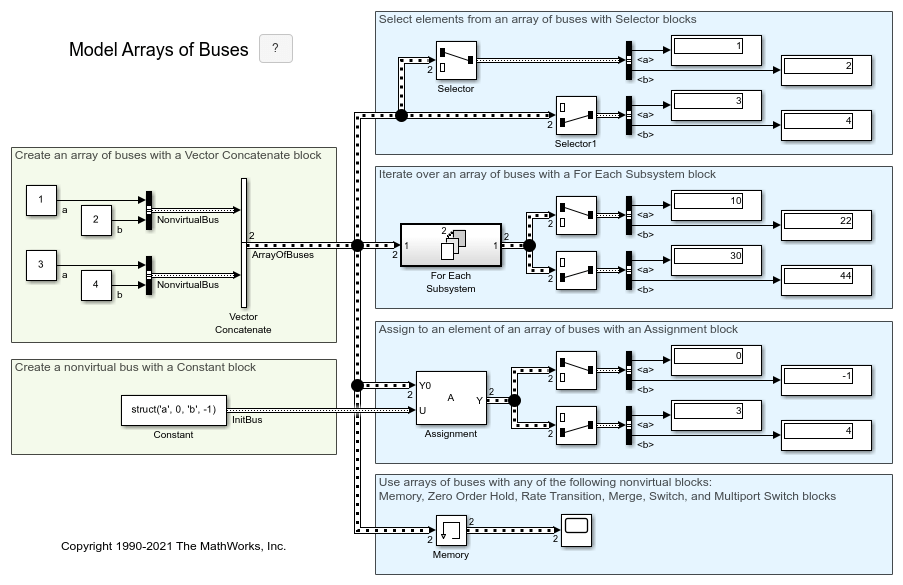Vector Concatenate
串联相同数据类型的输入向量以进行迭代处理
库:
Simulink /
Commonly Used Blocks
Simulink /
Math Operations
Simulink /
Signal Routing
HDL Coder /
Math Operations
HDL Coder /
Signal Routing
Vector Concatenate 模块的替代配置:
矩阵串联
描述
Vector Concatenate 模块会串联输入信号以创建一个非标量信号,您可以使用子系统(例如,For Each、While Iterator 或 For Iterator 子系统)对其进行迭代处理。
您可以使用多个 Vector Concatenate 模块分多个阶段创建输出信号,但结果是平面结构,就像您只使用一个模块串联信号一样。
输出信号中信号的显示顺序与模块的输入信号相同。有关各种模块方向的端口顺序的描述,请参阅标识旋转或翻转模块上的端口位置。
您必须使用 Vector Concatenate 或 Matrix Concatenate 模块来定义总线数组。有关详细信息,请参阅 使用总线数组组合非虚拟总线。
示例
扩展示例
端口
输入
输出
参数
模块特性
数据类型 |
|
直接馈通 |
|
多维信号 |
|
可变大小信号 |
|
过零检测 |
|
替代配置
扩展功能
版本历史记录
在 R2009b 中推出

